“Pura vida,” said Erin Brown as the boat hummed across brackish waters. Erin is the sportsmen outreach coordinator for the National Wildlife Federation’s Vanishing Paradise program. More importantly, Erin is a coastal Louisiana native in love with her home. “Pura vida means pure life,” she said. “They say it everywhere in Costa Rica. It means a life that’s rich with… stuff like this.” Erin motions to the marsh surrounding us as we cruise along just west of the Mississippi River and its confining levee with a couple other native Louisianans. “Pure life” could have two meanings in this context. It could mean pure as in simple and clean. It could also be the perfect meta description tag for Louisiana marshes. The region, the waters, the air, the soft soil, the culture and the people all pulse with life. The marsh is pure life.
The richness found here is astonishing. Speckled trout (no relation to real trout but rather a variety of weakfish) along with an occasional sheepshead, redfish, and catfish all joined us in the boat that afternoon. Various waterfowl flew overhead. Brown pelicans knifed through the air before crashing into schools of mullet. The pneumatic sounds of surfacing dolphins near the boat jolted me every time. I’d never been so close to dolphins. Vitality in abundance and of astounding diversity flourished everywhere. Even the fresh-caught bait shrimp crawling in the livewell were fascinating to this landlocked hillbilly.

Yes, troubling as it may be to fat line purists, we were fishing with live bait. I needed some relaxation after four whirlwind days of fly fishing, food and education within the outdoor culture that defines southern Louisiana. Warm breezes and a gentle November sun stayed with us on my last afternoon as we were guests on the boat of Randy Loup, who owns a local landscaping business. Erin and I were accompanied by Foster Creppel, owner of Woodland Plantation. Discussions ranged from how much I love Louisiana despite its obnoxious LSU fans, to just how the hell Louisiana folk can consume mountains of world-class cuisine and drink after drink with seemingly no consequences. That last bit was truly astounding. I flat out couldn’t keep up, and lord knows I tried.
But sober conversation about threats — urgent threats that are right now destroying the Sportsman’s Paradise — dominated the day. “It was oyster reefs, then the passes, barrier islands, cypress swamps and then these grasslands, like this,” said Foster, explaining how the Mississippi River doesn’t just dump into the Gulf of Mexico. Or, at least it shouldn’t.

Instead, the Mississippi’s final journey to the gulf should happen through a complex graduation of ecosystems, each dependent on the next. But those ecosystems have been decimated. “So we clearcut the cypress swamps, harvested all the oyster reefs,and then we built the levee in 1928, disconnecting the estuary from what built it all.” But this was just the first wave, said Foster. “And then came the oil and gas companies. Freeport McMoRan moved in and started harvesting sulfur. And so, all of that is causing us to wash away.”
Pleasant breezes, sun rays, and cooperative fish couldn’t chase away the clouds of deep concern. For my three fishing partners, it wasn’t only the threat of losing an unbelievable fishery. It was also the threat of losing their identity and the place that built their culture. It’s perhaps the most alarming and pressing regional environmental issue today, and it’s been woefully underreported.

Despite the evidence of loss pointed out to me by Foster and Randy that afternoon, we tried to enjoy the bounty. A thick scent of primordial energy emanated from the water, and roseau cane danced in gulf winds as we baited our hooks and soaked in the pure life while we could. We may not have the opportunity to soak it in much longer.
Vibrant as they are, the marshes of southern Louisiana are fading right before our eyes. Literally. The marshes lose, on average, a football field of land every hour of every day. According to information found on the Coastal Wetlands Planning, Protection and Restoration Act website, at the current rate of loss, 33 miles of land will disappear into the Gulf of Mexico by the year 2040. New Orleans will be a coastal city. The economic effects of this land loss would be catastrophic, but the loss would also kill coastal Louisiana’s soul. With an estimated 30 percent decline in recreational fishing harvest expected, it would shake the foundations of outdoors culture here where everyone has at least one boat and fresh fish is very often what’s for dinner. Place — flora, fauna, and topography — are the creators of culture. When one element of place is lost, the foundation can crumble. Coastal Louisiana is threatened with the loss of all, and the window for averting this tragedy is rapidly closing.

Wetlands take a beating at the hands of progress across the globe, and the Louisiana wetlands are no different. They’re scarred with canals. As Foster mentioned, the fossil fuel industry along with other commercial interests have carved and sliced through the marshes with abandon, allowing saltwater to penetrate previously freshwater areas killing intolerant plant life and flipping entire ecosystems. Invasive species like burrowing nutria and feral hogs destroy the marshlands by eating tree seedlings and ripping up soil-embracing root systems. The resources have been taken for granted and abused by a growing population and hungry economy. But the biggest threat to the Louisiana marshes is unique to Louisiana.
Coastal Louisiana was built over thousands of years by silt from the interior of North America transported south by the Mississippi River. The current rate of land loss — remember that startling football field per hour — likely hasn’t changed much over a millennia. But the rate of replacement has traditionally been greater than the rate of loss. That replacement, though, was contingent on the mighty Mississippi flowing through and flooding the land unharnessed.
Left to it’s own accord, the Mississippi River overflowed its banks and often dramatically. The river is a land builder. The main channel, shifting as previously deposited silt formed land and altered topography, regularly changed course (see above), and all land south of New Orleans was formed by these overlapping delta lobes as the mouth of the river meandered. The constant influx of new fertile land (see below) outpaced natural erosion and was even able to combat the effects of scouring hurricanes. Life-giving silt from the heartland was the clay of creation and a healing balm that led to everything southern Louisiana is today.
But when levees were built to shackle the Mississippi River’s monstrous flooding power, shackled, too, were benefits of its untamed rampage. Silt and the delicate balance of freshwater and saltwater is the life source for the marsh. Since that random yet dependable and vital lifeline has been cut, erosion has gone unchecked. Salinity levels have moved up with ocean water through shipping canals displacing entire ecosystems. The land and people are left more vulnerable to hurricanes and tropical storms without a buffer of wetlands absorbing the ocean’s surges. Put simply, the marshes today are weakened and dying of starvation. And dying with them is one of the most spectacular regions and cultures on Earth. It is indeed a sportsman’s paradise, and it is vanishing.
The engineering feats that created the coastal Louisiana economy and helped shape its culture now threaten to destroy it.
This story is part of a series that explores not only coastal Louisiana’s fisheries, but its people and their connection to the ecosystem, their real concerns, and their deep love of place. Coastal Louisiana is unlike anywhere else on the planet. To lose this unique ecosystem would be tragic, not just for those that live there, but for the world.




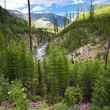

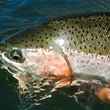




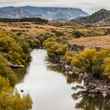
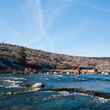




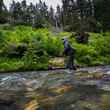




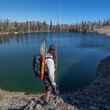



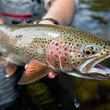
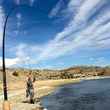


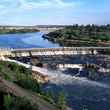
Comments